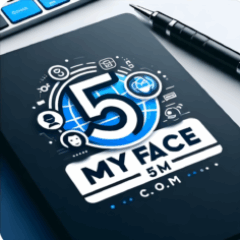The Fake Diploma Epidemic: Global Risks, Red Flags, and the Rise of Tech-Driven Solutions
A $21 billion shadow economy has quietly flourished around the world: the counterfeit diploma industry. With a simple online search for “buy fake university degree,” thousands of vendors offer forged credentials—often delivered in under 24 hours. These operations exploit digital technologies to create convincing replicas, posing serious threats to employers, academic institutions, and the public at large.
From hiring unqualified professionals to enabling fraudulent admissions, the implications of diploma forgery are far-reaching. As education shifts to digital formats, the battle between counterfeiters and verification systems is intensifying.
Scope of the Crisis: How Widespread Is Diploma Fraud?
Staggering Statistics: 33% of job applicants admit to fabricating educational credentials. Up to 75% of résumés contain inaccuracies, and alarmingly, three out of four admissions officers cannot spot fake PDF diplomas.
Global Incidents: In Lebanon, $9,000 can buy a forged military diploma. In Kuwait, entire doctorate rings have surfaced. Even Russia’s academic circles face corruption through fraudulent research credentials.
Digital Amplification: Sites like Axact operate diploma mills at industrial scale, complete with sales quotas, marketing teams, and fake university websites. Photoshop, desktop publishing, and AI tools now enable anyone to create forgeries.
How to Identify a Fake Diploma: Warning Signs & Tactics
| Feature | Real Diploma | Fake Diploma |
|---|---|---|
| Paper Quality | Archival-grade, textured paper | Thin, glossy or standard print paper |
| Seals/Watermarks | Embossed, holographic | Flat, printed, or missing |
| Signatures | Hand-signed in ink | Digitally printed or pixelated |
| Font/Layout | Professionally typeset, aligned | Inconsistent fonts, misaligned text |
| Language | Grammatically correct and formal | Spelling errors, awkward phrasing |
| University Name | Matches accredited database | Similar-sounding or fictitious names |
| Program Duration | Standard academic timeframes | Unrealistically short (e.g. 6-month MBA) |
| QR Codes / Links | Lead to official verification portals | Broken links or fake verification sites |
Behavioral Detection During Interviews
Skill Testing: Language certificates can be verified by switching to the claimed language during the interview—64% of candidates exaggerate their proficiency.
In-depth Questions: Ask about professors, courses, or campus experiences. Inconsistent or vague answers often reveal deception.
Traditional vs. Technological Verification
Conventional Methods:
Contacting institutions directly is accurate but slow—taking 4–6 weeks, often with processing fees.
Many employers skip verification entirely, citing time or cost.
Third-Party Screeners:
Agencies like Eagle Eye Screening cross-reference international databases, ensuring accuracy for critical roles (e.g., healthcare, engineering).
Consequences of Credential Fraud
For Individuals:
Termination: 53% of recruiters fire candidates discovered to have lied about education.
Legal Risk: In France, diploma forgery carries up to 3 years in prison and €45,000 in fines.
For Employers:
Legal liability in high-risk industries (e.g., unlicensed engineers or surgeons).
Productivity loss: Teams underperform by 20–30% when staffed with underqualified members.
For Institutions:
Damage to credibility and trust, especially when fake degrees are linked to legitimate universities (e.g., the Adventist doctorate scandal).
Blockchain in Action: A Case Study
The University of Lille implemented BCdiploma, a blockchain-based verification system. Graduates now receive secure links to digital diplomas that employers can verify instantly.
Results:
Verification time reduced from weeks to seconds
Zero successful forgery attempts since launch
The Future: Defending Credentials with Technology
Global Credential Standards: Networks like Canada’s MyCreds™ | MesCertif™ support international verification via standardized, secure platforms.
AI-Powered Detection: Machine learning tools now detect subtle design irregularities, metadata tampering, and document edits invisible to the naked eye.
Ethical Advocacy: Religious groups such as Seventh-day Adventists promote “biblical integrity frameworks,” emphasizing moral responsibility in education.
Rebuilding Trust in Academic Credentials
The fake diploma crisis demands a global, coordinated response:
Employers must adopt blockchain and verified digital credentialing.
Institutions need to replace paper with tamper-proof digital formats.
Governments must impose harsher penalties on diploma mills and online forgers.
As former FBI agent Allen Ezell warns, these fraud networks “mirror legitimate businesses—with sales goals and market research.” Combating them requires not only technological innovation but also a firm ethical commitment to the truth.

